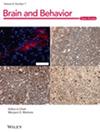Machine Learning-Based Identification of Children With Intermittent Exotropia Using Multiple Resting-State Functional Magnetic Resonance Imaging Features
Abstract
Objective
To investigate the performance of machine learning (ML) methods based on resting-state functional magnetic resonance imaging (rs-fMRI) parameters in distinguishing children with intermittent exotropia (IXT) from healthy controls (HCs).
Method
Forty-one IXT children and 36 HCs were recruited. The amplitude of low-frequency fluctuations (ALFF), fractional ALFF (fALFF) in the slow-4 and slow-5 bands, and regional homogeneity (ReHo) were calculated. The 360 cortical areas of the Human Connectome Project multimodal parcellation atlas (HCP-MMP 1.0 atlas) were chosen as 360 regions of interest (ROIs). Each rs-fMRI parameter value of one ROI was taken as a feature. The Pearson correlation coefficient (PCC) was performed to reduce dimensions. We used four feature selection methods and nine classifiers. The ten-fold cross-validation was applied to evaluate the results.
Results
The ML methods combined with rs-fMRI parameters had good classification performance in distinguishing IXT children from HCs, with the slow-5 fALFF parameter showing the best classification performance. The linear regression (LR) classifier with analysis of variance (ANOVA) feature selection achieved the highest area under the receiver operator characteristic curve values (0.957, 0.804, and 0.818 for the training, validation, and test datasets, respectively) using five features, including the slow-5 fALFF values of the right inferior parietal gyrus (IPG), right supplementary motor area (SMA), left primary somatosensory complex, right frontal opercula, and left dorsolateral prefrontal cortex (DLPFC), and the accuracy, sensitivity, and specificity values were 0.759, 0.759, and 0.760, respectively. The brain regions showing the greatest discriminative power included right IPG, right SMA, left primary somatosensory complex, right frontal opercula, left DLPFC, right posterior orbitofrontal cortex (pOFC), left medial superior temporal (MST), left parieto-occipital sulcus (POS), and right anterior ventral insula.
Conclusion
Based on the slow-5 fALFF values of the five cortices as the features, LR with ANOVA was the best ML model for distinguishing between IXT children and HCs. The result indicates the slow-5 fALFF parameter has the potential to serve as a biomarker for distinguishing IXT children from HCs. In addition, brain regions related to stereopsis, eye movement, and higher-order cognitive functions play an important role in the neuropathologic mechanisms underlying IXT.


 求助内容:
求助内容: 应助结果提醒方式:
应助结果提醒方式:


